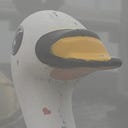Member-only story
LaTeX for Roam from non-math perspective
Use it for interesting font creations, simple diagrams and fun
In this short article, I intend to look at one part of Roam that is usually overlooked by non-technical users: it comes under weirdly written name LaTeX. But don’t worry, this is nothing about tightly fitting sexy clothes and catsuits.
As Wikipedia states, LaTeX (pronounced by Greek aficionados rightly as /ˈlɑːtɛx/) is “a document preparation system and markup language”. In other words, it allows you to write, e.g., your whole article in a text file and get as an output a professionally looking PDF prepared for printing. LaTeX is mainly popular among scientist because of its great support for typesetting mathematical formulas. However, you can use it for many different things. Your humble Roaman duckling used it, e.g., for typesetting his master thesis from humanities (and I regretted it dearly).
LaTeX does contain an unbelievable number of various packages — little libraries — that you can easily download and fulfil your weirdest typesetting dreams. Like three rows of footnotes? That is no problem for LaTeX! Five tables of contents? Go on! Writing your own special commands for formatting? You are welcome! However, we are not going so far today. Instead, we will look at some basics of LaTeX for Roam that everybody can…
